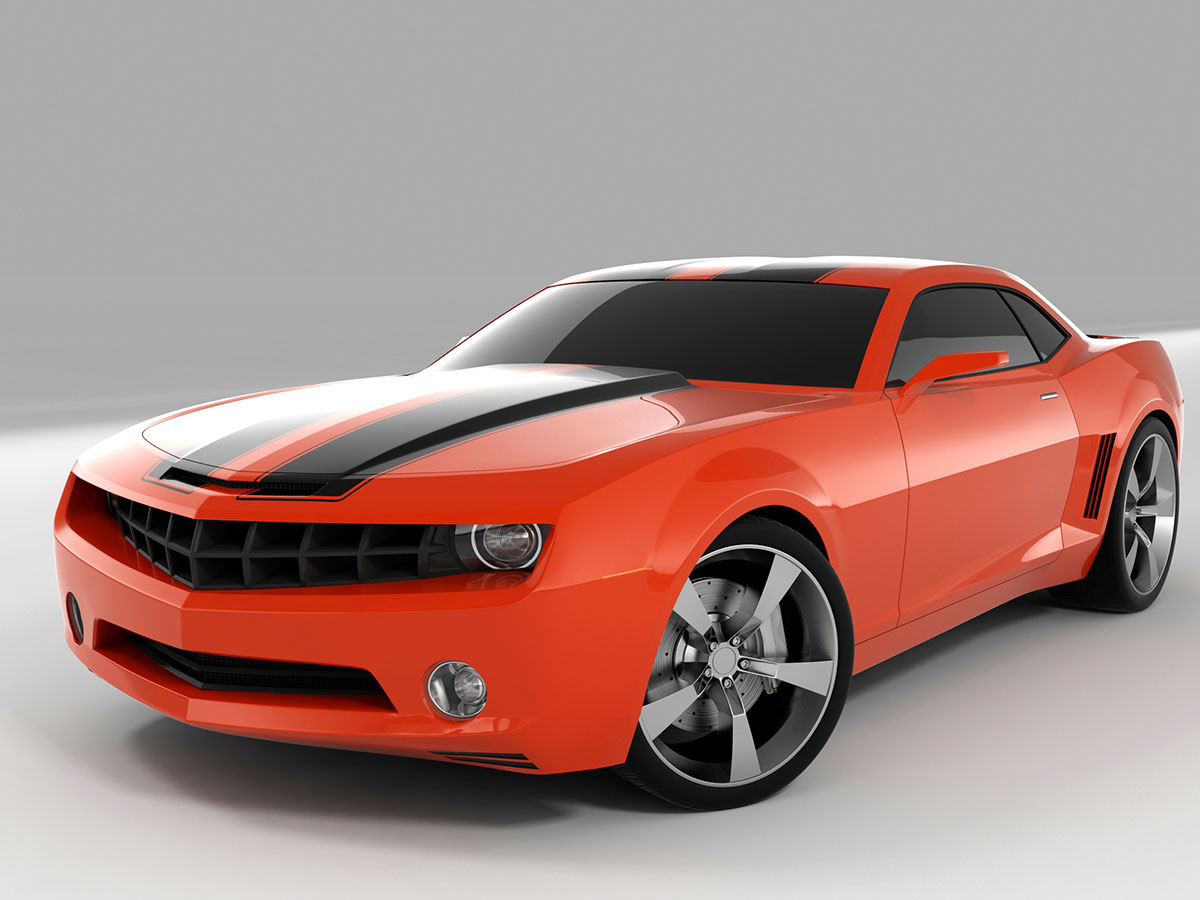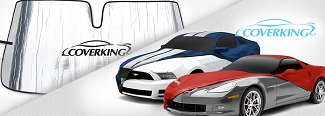Your Go-To Guide On Camaro Generations

Everything You Need to Know About Camaro Generations
Can you really call yourself a gearhead if you don’t know your Camaro generations? If you’re a newbie, don’t worry. We’ll keep your secret, or you can get yourself up to speed by reading this ultimate guide on Camaro generations.
Other than the Camaro and the Corvette, no other car has paced the Indianapolis 500 since 2004 (and Camaro has done that 8 times in its history).
This high performing powerhouse has been around since 1966 (for the 1967 model year), which equates to over 5 decades of evolution (inclusive of upgrades, hiccups and even a period of discontinuation).
But how much do you really know about Camaro’s six generations?
Fun facts abound, and in this guide, we’ll give you everything you need to know in order to school other gearheads in Camaro history.
How the Camaro Started
Picture this: The Ford Mustang was the hit of 1964, premiering at the World’s Fair in New York, and Chevrolet needed a response… ASAP. Although it was considered a rush job, Chevy battened down the hatches, and the Camaro hit the market just two short years later.
The Corvair couldn’t help Chevy compete with the Mustang and the Chevy Nova was too boxy to have even a minimal appeal with the right customer base. Interestingly, though, the first Camaro had a lot of pieces borrowed from the Nova, including the unibody and front subframe, and shared several major components with the Pontiac Firebird.
The First Generation
The first generation of Camaro includes model years 1967 through 1969, and debuted as a two-door sport coupe, with a convertible option. The Sport Coupe went on sale in September 1966, and was priced starting at $2466.
221,000 Camaros were sold that year, and only 25,141 of those were the convertible, retailing for an additional $240 on top of base price.
There were seven (yes, seven) engine options, with the base engine of the new Camaro being a 3.8 liter boasting 140 gross horsepower. The other options included 4 small-block V-8’s and 2 big-clocks to choose from.
Of all the options, the most popular design was a base coupe with a small-block V8 engine combined with a 2-speed Powerglide automatic transmission.
But the SS package packed some serious muscle in its engines, which is what made the Camaro name. With up to 396-cubic-inch big blocks available, the SS package topped out at 375 horsepower.
The Rally Sport Package combined the SS and Z28, and the only thing that really changed was appearance – hidden headlights, different taillights and a nicer interior.
The 1968 Rally SS ditched the vent windows for “Astro Ventilation.” Upgraded taillights and grilles were also added. The SS option in 1968 came with dual exhaust, red-striped tires, black grille accents and a way better suspension than its predecessor.
In 1969, the Z28 Sport Coupe was redesigned. Nothing about it was mechanically different, but the Camaro got some curves.
The Second Generation
From 1970 to 1981, Camaro’s second generation would be the longest generation to date.
The first cars of the second generation were mechanically similar to the first generation, but they had new front subframes and a unibody rear structure. They also scrapped the convertible option.
The 1970 strike delayed production considerably, causing some insiders to call the 1970 models “1970-½”.
The 1970 Z28 had a better engine, but the LT-1 seemed too tame to live up to Camaro’s muscular reputation. With 360 horsepower coming from a 360-cube, small-block LT-1 V-8, the signature revving that Camaro was known for was sacrificed in favor of an everyday riding experience.
The 1972, SS stole its appearance from Ferrari and remained that way through 1973. It had a choice between small-block or big-block engines, and again, a labor strike hurt GM’s production.
In 1973, big-block V-8’s weren’t an option anymore. The Z28 switched to the hydraulic-cam L82 in 1973. The Z28 or Rally Sport Packages could be combined with the LT-1 for a less powerful, more comfortable ride.
By 1974, a new federal regulation on bumpers forced Chevy to redesign the nose and tail of the beloved Camaro, adding more prominent bumpers that increased the length significantly. Although the Z28 graphics were updated, the mechanics of the car were falling behind. The V-8 wasn’t as powerful as it should have been and topped out at a sad 245hp.
Rather than another flop in a redesign, Chevy got rid of the Z28 altogether in 1975, and instead, gave the LT got a wraparound window to help with visibility.
Camaro saw better sales in 1976, but they didn’t do anything to fix their miserable engine outputs. They did, however, offer a paint-and-tape package for the Rally Sport option (in hindsight, probably not the longest-lasting way to paint a Camaro).
1976 also saw the return of the Z28 and in 1977 it was offered as a separate model. It had 15×7-inch wheels and its 350 small-block delivered 185 horsepower.
Soft-plastic bumper covers and a translucent T-top roof were on the menu for the 1978 Rally sport, while he Z28 didn’t change much at all.
In 1979, Camaro introduced the Berlinetta to replace the LT, marketed with a luxury focus with changes to the interior features and softer suspension.
The Third Generation
The Third generation lasted from 1982 to 1992.
In 1982, the Z28’s new design decreased the car’s size and added a coil-spring suspension and struts in the front. The change in style gave the car (already known for it’s great handling) even better track capabilities and reflected the style of the time period – angular design with a new-age focus on technology.
1982 saw the introduction of 2.5-liter “Iron Duke” four-cylinders with 90 horsepower. It was possible to opt for the 5.0-liter V-8, but that only bumped it to 145 horsepower, even with a four-barrel carburetor (sad). Needless to say, the car was quite a flop.
Redemption came in the name of the 1982 Z28. It had a 190-horse, 5-litre with a 5-speed manual transmission, finally packing the punch Camaro needed. It was still outfitted with the four-barrel, but the 5-speed manual seemed to fix the power problem.
By 1984, the four-speed automatic transmission was an option on most models. And by 1985, a Tuned-Port Injection (TPI) became an option for the Z28.
1985 also saw the birth of the IROC-Z when Chevy sponsored the International Race of Champions series. With 16-inch, five-spoke wheels and the TPI, it rated at 215 horsepower.
Chevy brought back the Camaro for the first time since 1969 in 1987. It also left the miserable failure of the Iron Duke in the past, where it belonged.
The IROC replaced the Z28 in 1988. And the IROC 1LE package gave Camaro a name in showroom-stock racing.
The Z28 made yet another comeback in 1991 and 1992. It became the name in high-performance when Chevy sadly wasn’t allowed to use the IROC name anymore. It’s known for its tall rear wings, hood scoopers and five-spoke wheels.
The Fourth Generation
The fourth generation Camaro started in 1993 and lasted up to discontinuation in 2002… with a lot happening in between.
The 1993 Camaro was designed to be sporty but it missed the mark. Although it no longer embodied its predecessors’ appeal, at least it performed well.
The Z28 had rack-and-pinion steering, a 5.7-liter V-8 engine that rated at 275 horsepower available in a six-speed manual transmission.
The convertible returned again in 1994, and it stuck around for a while this time.
The 1995 Z28 gave Camaro enthusiasts the first choice of V-6 powerplants. Buyers loved the 200-horsepower, 3.8 liter V-6 and it completely replaced the 3.4-liter by 1996.
Chevy brought back the SS model of the Z28 in 1996. The engine rated 305-horse and debuted big 17-inch wheels.
For its 30th anniversary in 1997, a white convertible was released. Painted with orange stripes, this edition was meant to put enthusiasts in mind of the 1969 pace car.
The aluminum, 5.7-liter LS1 V8 was a performance-enhancing edition for the 1998 redesign of the LT-1. The only significant update of the fourth generation, this 305-ponies was powerful and had new, compound headlights.
In 2002, the Camaro was canceled. But before it was gone, the 2002 convertible model was designed to run from 0 to 60 in 5.2 seconds.
The Fifth Generation
The second to last generation of Camaros ran from 2010 to 2015.
When Camaro made its comeback in 2010, the SS was using a platform from GM’s Australian subsidiary, Holden. The independent rear suspension gave the Camaro refined handling and an even base.
Styled after the 1969 models, it was offered in a base, RS, and SS. The RS had 304-horsepower 3.60-litre, but the real power was in the SS – 6.2-litre V8 rated at 426-hp.
The new, supercharged ZL1 was released in 2012. Another 6.20-litre V8, this engine was rated at a massive 580-horsepower. That’s 0 to 60 in 4.1 seconds.
The 1LE was introduced in 2013 and in 2014 the Z/28 came back – with the slash and all. It was the most expensive Camaro to-date at $75,000. With huge 19-inch wheels and a 7.0-litre LS7 V8 engine, it’s rated at 505-hp.
The Sixth Edition
The final edition of the Camaro started in 2016.
Styled similarly to the fifth-generation, the 2016 engines range from 275-hp turbocharged 4-cylinder to a 455-hp LT1. They also dropped a significant amount of extra weight – over 200 pounds to be exact.
The 2017 ZL1, on the other hand, boasts 650-horsepower supercharged LT4 6.2-litre V-8 and can hit upwards of 193 mph.
The power-packed 2018 ZL1 1LE performance package reduces the car’s weight by almost 60 lbs as compared to the ZL1, increasing speed and a new adjustable suspension.
The More You Know
Since 2017 marked Chevy’s 50th Anniversary, there’s never been a better time to get up-to-speed with your Camaro generations knowledge. There’s a lot to talk about!
If you’re not just a Camaro-enthusiast but also a Camaro-owner, your knowledge isn’t the only thing that influences your reputation among gearheads. You need to make sure that your Camaro has all of the best parts and accessories.
Looking to upgrade and enhance what you’ve already got? Read our blog and have a look at our parts store to find out what you could be missing.







Recent Comments